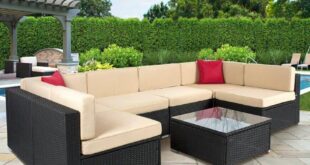The word cottage, originally meaning splinter, was a far cry from meaning a farmer living in a small house with a barn to meaning a small house. While the cottages of Europe serve as living quarters, the cottages of America usually refer to a vacation home. What does it look like and how do you pull off a country style if you want? Let’s take a look at some features of such a house.
Outdoors
A holiday home in the English countryside often resembles a different lifestyle. There can be a simple row of windows, as in a Georgian house, or you can find the half-timbered pattern of a Tudor house. If you want to take your vacation home in a more modern direction, try to keep the period charm and use color and details like fixtures to update your tiny home. For example, black is a great option to make your cottage stand out from the other charming cottages.
Thatched roofs are as classic as can be and together with some climbing roses you have an English cottage fit for the film. If you want to create a beach cottage look, embrace the clapboards of the Victorian sea. Paired with your classic mint greens and windswept grasses, you’ll make your vacation home a place you never want to leave.
If you don’t have a porch to decorate, make window boxes. They make it easy to add a pop of color to your cottage and easy to swap out seasonally. A back patio is not only a great way to expand your entertaining space, but it also accentuates the coziest vacation home decor.
Inner
When renovating a historic cottage, you’re likely to find many things beneath the modern wood and drywall, like brick and stone. If you are able, leave these items open to give your cottage a real nostalgic feel. Beams were a common sight in a cottage and may yet need to be completed. However, you will appreciate the vintage touch they add to your cottage.
Shutters are welcome for holiday homes not only for the outside but also for the inside. Interior blinds can be folded completely away from the windows and, unlike curtains, sometimes allow maximum daylight.
Classic English cottages thrive on patterns. If you’re not sure where and how to place your patterns, simply cover your walls, cabinets, furniture, and even the floor with white, then look around to see what colors are needed and where the pattern is without too much is of trial and error.
 decordip Interior Design Ideas
decordip Interior Design Ideas




